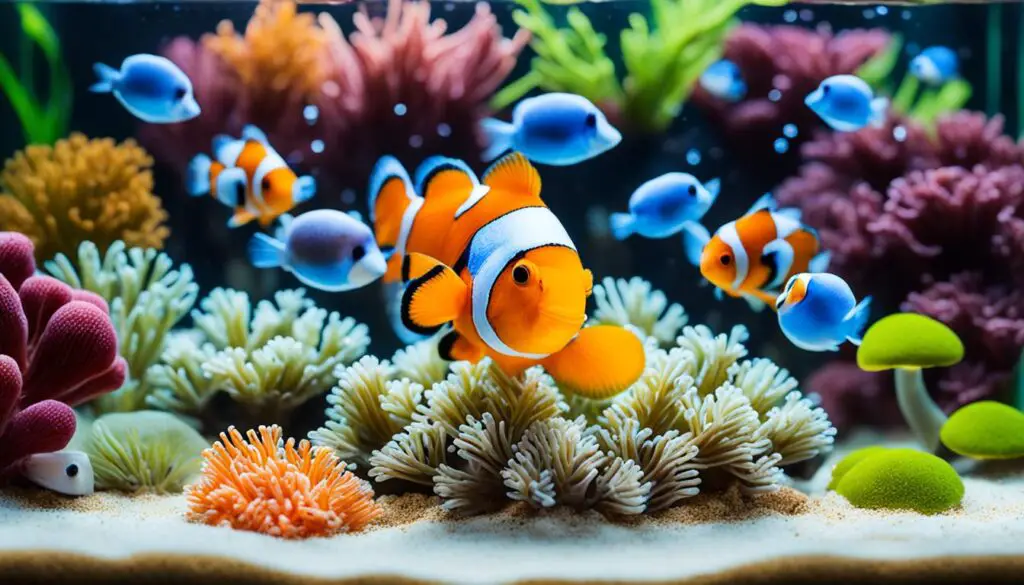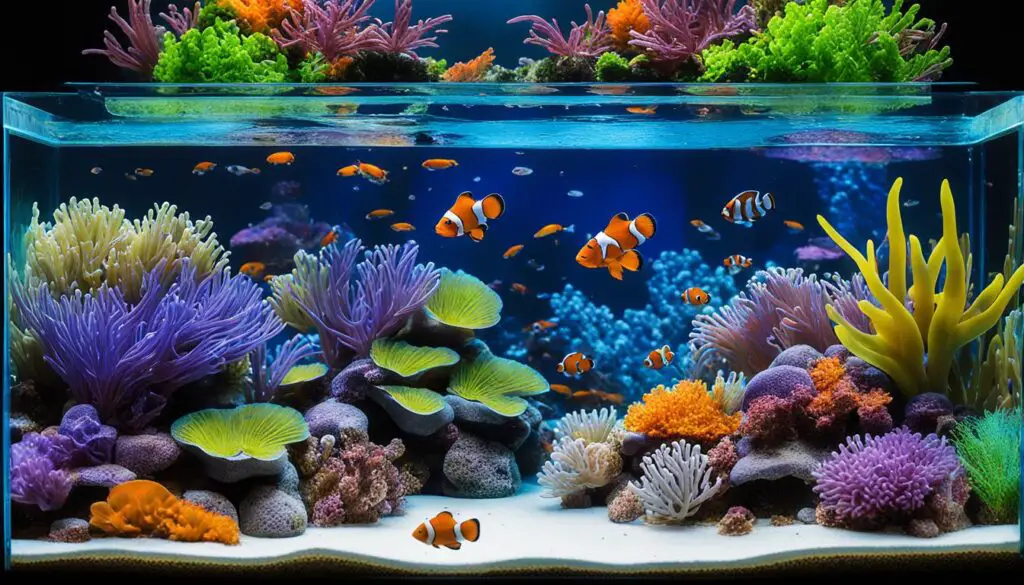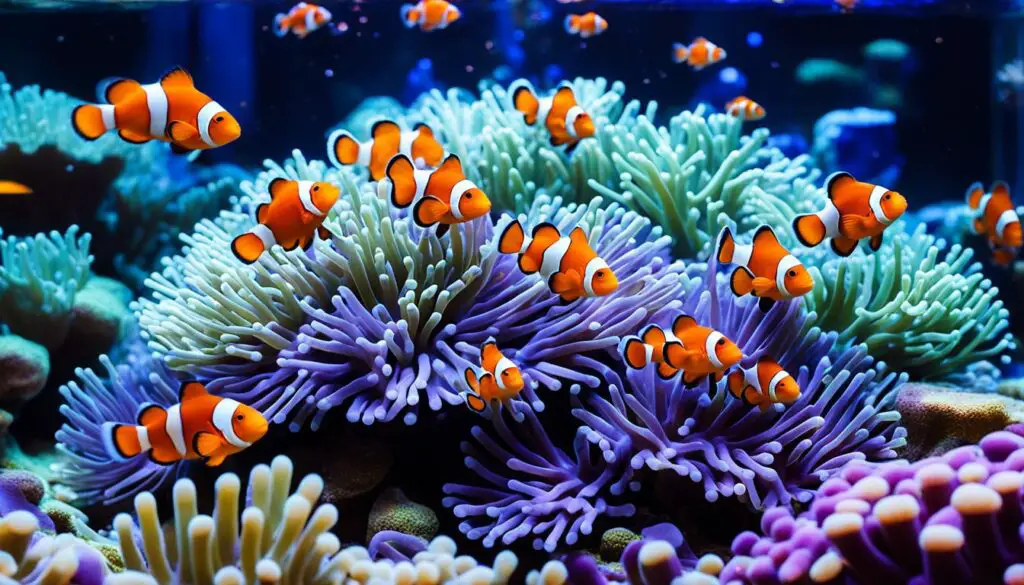What Do Hermit Crabs Look Like Without Their Shell

Introduction
What Do Hermit Crabs Look Like Without Their Shell: Hermit crabs are fascinating creatures known for their peculiar habit of carrying and living inside discarded shells from other marine organisms, which serve as protective exoskeletons. These shells not only provide shelter but also determine the hermit crab’s overall appearance.
Hermit crabs belong to the family Paguridae and are widely distributed across the world’s oceans, from shallow coastal waters to the deepest abyssal regions. They are crustaceans, closely related to lobsters and shrimp. Unlike their more conventional relatives, hermit crabs have a soft, curved abdomen that lacks the protective exoskeleton found in other crustaceans.
When a hermit crab ventures out of its shell, perhaps during a brief shell exchange or when transitioning to a new one, its exposed body offers a unique glimpse into their true form. The soft abdomen, known as the pleon, is flexible and spiraled. It has specialized gills that facilitate respiration and assist with maintaining the moisture required for survival in their chosen coastal habitats.
We will delve into the intriguing world of hermit crabs, exploring their physical characteristics when out of their shells and shedding light on the evolutionary significance of their remarkable behavior. We will also discuss the different stages of a hermit crab’s life cycle and its incredible ability to adapt to changing environments. Understanding what hermit crabs look like without their shells provides valuable insights into their biology, ecology, and the complex relationship they share with their protective abodes.
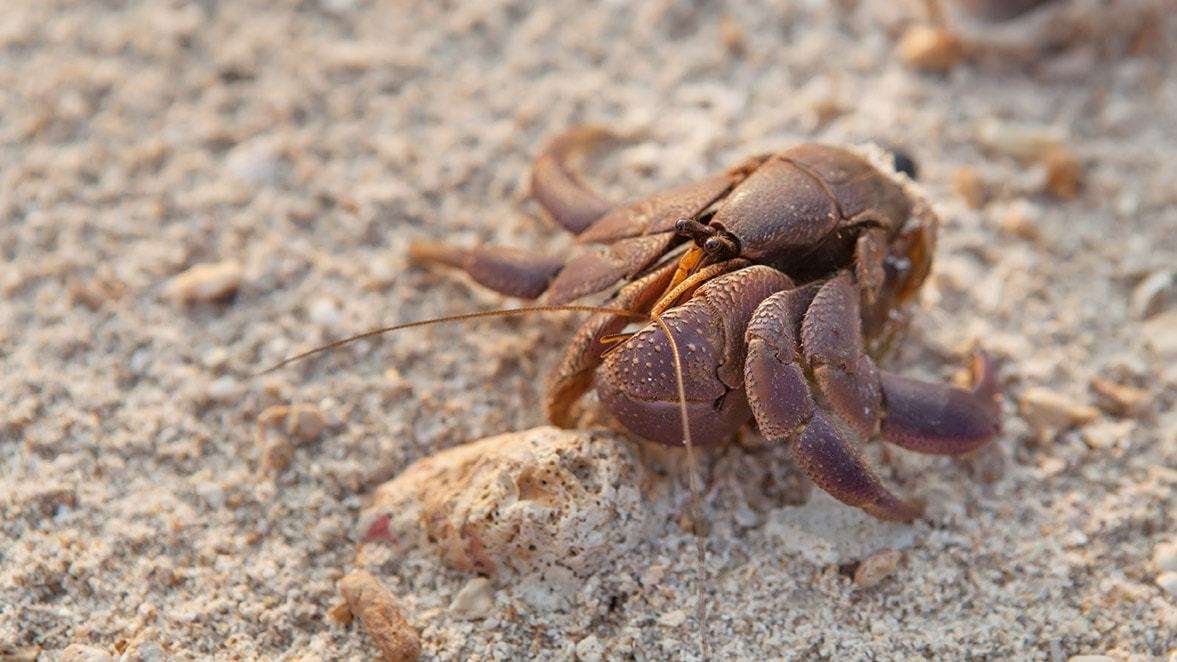
What happens to a hermit crab without a shell?
Without a shell, a hermit crab is more vulnerable to the outside environment; its exoskeleton will get too dry, and the crab will become lethargic. Crab owners can help their pets find new homes before their health declines.
When a hermit crab finds itself without a shell, it enters a state of extreme vulnerability. Their soft, unprotected abdomen, known as the pleon, is exposed, leaving them susceptible to predation, desiccation, and physical harm. In this defenseless state, hermit crabs are at their most fragile.
Without the protective shell, a hermit crab’s main line of defense is its agility and resourcefulness. They will often seek refuge in burrows, crevices, or other hidden spots, where they can avoid direct sunlight, which can lead to dehydration. Hermit crabs will also use their agile legs to scavenge for alternative shells, constantly on the lookout for a more suitable, protective dwelling.
If a hermit crab cannot find a new shell promptly, it may resort to burying itself in the sand or mud to minimize exposure to the elements. However, this is a temporary solution, as it greatly limits their mobility and foraging capabilities.
Overall, being without a shell is a precarious and temporary state for a hermit crab. Their continued survival hinges on their ability to secure a new shell as quickly as possible to regain their much-needed protection and continue their remarkable, shell-dependent way of life.
What does a hermit crab body look like?
Instead, hermit crabs have a hard exoskeleton on the front part of their bodies but a soft tail on the other half, which they protect using the discarded shells of other animals, like whelks. They’re more closely related to certain kinds of lobsters than to true crabs.
The body of a hermit crab is a fascinating and unique structure, shaped by their reliance on protective shells. When a hermit crab is out of its borrowed shell, its body consists of several distinctive parts.
The most prominent feature is the hermit crab’s soft and flexible abdomen, called the pleon. This pleon is typically twisted into a spiral shape, allowing the crab to fit snugly into a variety of shells. The pleon is also where many of the hermit crab’s vital organs are housed, making it a critical part of their anatomy.
At the front of the pleon, you’ll find the crab’s tail, which can be elongated and pointed in some species. This tail helps the crab maintain balance, especially when navigating its surroundings or climbing.
Hermit crabs also have a well-developed cephalothorax, which is the front part of the body. This section houses the crab’s head, sensory organs, and appendages, including the legs and claws. These appendages are equipped for a range of functions, from digging and climbing to capturing food and defending themselves against potential threats.
The exposed body of a hermit crab is not only fascinating for its unique appearance but also for its adaptability, which allows these remarkable crustaceans to thrive in diverse coastal ecosystems, relying on a variety of shells to serve as their portable homes and protect their delicate pleon.
What are 3 interesting facts about hermit crabs?
20 FACTS ABOUT HERMIT CRABS YOU PROBABLY DIDN’T KNOW
- The hermit crabs most commonly found in the pet trade are known as Purple Pincers (Coenobita clypeatus).
- In the wild, Purple Pincers spend most of their time climbing and borrowing under trees.
- Despite their name, hermit crabs live in large groups and are very social.
Hermit crabs are captivating creatures with a host of interesting characteristics. Here are three fascinating facts about these unique crustaceans:
Shell Swapping Behavior: One of the most intriguing aspects of hermit crabs is their habit of using and switching shells as they grow. As hermit crabs mature, they must find new shells to accommodate their increasing size. This process involves them searching for suitable empty shells, often competing with other hermit crabs for the best options. This shell-swapping behavior is not only a survival necessity but also a remarkable example of resourcefulness and adaptation in the animal kingdom.
Social Hierarchies: Hermit crabs have been observed forming complex social structures within their communities. These hierarchies are based on the size of the crab and the quality of the shell it inhabits. Larger hermit crabs with better shells tend to hold higher positions in the hierarchy, while smaller or shell-less crabs occupy lower ranks. This social organization can affect their access to food and mating opportunities, making for a fascinating dynamic in these seemingly solitary creatures.
Ecological Importance: Hermit crabs play a crucial role in their ecosystems by helping recycle nutrients and maintaining a balanced marine environment. They scavenge and feed on decaying organic matter, which aids in nutrient cycling. Additionally, their constant search for new shells and burrowing activities can affect sediment turnover in coastal areas. By fulfilling these ecological roles, hermit crabs contribute to the overall health and stability of their habitats.
These intriguing facts about hermit crabs highlight the complexity of their behavior and their essential role in the coastal ecosystems they inhabit.
Do hermit crabs need shells to live?
As a crab grows, it must find, examine and test out a new, larger shell. It has to determine if this tool will be a good fit, and fast. A hermit crab cannot survive for long without its shell.
These crustaceans have evolved a unique and ingenious strategy for survival by utilizing empty shells as protective homes. Without a shell, a hermit crab’s soft and vulnerable abdomen is exposed, rendering it highly susceptible to a range of threats.
The primary purpose of the borrowed shell is to provide protection. It acts as a portable exoskeleton, safeguarding the hermit crab from predators, desiccation (drying out), and physical damage. Hermit crabs are incapable of producing their own hard, calcified shells like other mollusks and crustaceans. Therefore, they depend on finding and adopting shells from other marine organisms, such as snails.
Hermit crabs actively seek out appropriately sized and shaped shells to accommodate their bodies. As hermit crabs grow, they must continually find new shells to inhabit, initiating a fascinating process of shell exchange. This dependence on shells is so ingrained in their biology that it has become a defining characteristic of hermit crab behavior and anatomy.
Shells are an absolute necessity for the survival of hermit crabs. They are more than just protective coverings; they are the very essence of a hermit crab’s existence, allowing them to thrive in the diverse coastal environments they call home.
Are hermit crabs born without a shell?
Hermit crabs are not born with shells of their own. Instead, they just find a suitably sized shell to protect their bodies.
Hermit crabs are not born with shells of their own. Instead, they begin their lives as tiny, soft-bodied creatures. As they grow, they face a constant challenge: finding and acquiring suitable shells to protect their vulnerable bodies. This quest for shelter is crucial for their survival, as a hermit crab without a shell is extremely vulnerable to predators and environmental stresses.
Young hermit crabs often rely on discarded shells from other marine creatures, such as gastropods. They diligently search the ocean floor, seeking out shells that are the right size and shape for their bodies. When a hermit crab finds a suitable shell, it undergoes a meticulous process of transferring from its old, cramped shell to the newfound abode. This transition requires a delicate balance of timing and dexterity, as the crab must swiftly move its soft abdomen into the new shell before potential threats approach.
The relationship between hermit crabs and their shells is not just a matter of protection; it’s a fundamental aspect of their biology and behavior. The availability of shells directly impacts their growth and overall well-being. Without these mobile homes, hermit crabs would be left exposed and vulnerable, unable to thrive in the dynamic and often perilous coastal environments they call home.
Can you see a hermit crab’s abdomen if it’s outside the shell?
The abdomen of a hermit crab is soft, flexible, and typically spiraled. It’s located at the rear end of the crab’s body and serves several important functions. This includes respiration, waste elimination, and reproduction.
When a hermit crab finds a new shell, it will extend its abdomen out of the current shell and carefully insert it into the new one. This process is crucial for the crab’s survival and comfort, as it allows the crab to properly secure itself within the protective confines of the shell.
In some cases, a hermit crab may partially emerge from its shell, exposing its abdomen. This can happen when the crab is in search of a larger or more suitable shell, or when it’s engaged in various activities like feeding or grooming. As this leaves it vulnerable to potential threats from predators or environmental hazards.
Observing a hermit crab’s abdomen when it’s outside its shell provides a unique glimpse into the fascinating anatomy and behavior of these resilient crustaceans.
Do hermit crabs only use shells from marine snails?
While hermit crabs are best known for their habit of repurposing shells from marine snails, they are not limited exclusively to this source. Hermit crabs are opportunistic creatures, and they will utilize a variety of natural materials as shelter if suitable shells are unavailable. This adaptability is crucial for their survival in diverse coastal environments.
In addition to snail shells, hermit crabs may make use of shells from other mollusks like clams and even the discarded exoskeletons of other crustaceans. Furthermore, in certain situations where shells are scarce, hermit crabs have been observed using human-made debris such as bottle caps or small containers as makeshift shelters. This innovative behavior highlights their remarkable ability to adapt to changing circumstances.
The availability of suitable shells greatly influences a hermit crab’s growth and well-being. A properly fitting shell not only offers protection but also allows the crab to grow and molt safely. Thus, while snail shells are a preferred and common choice, hermit crabs exhibit remarkable resourcefulness in finding alternative housing when necessary. Their ability to thrive in a range of environments is a testament to their resilience and adaptability.
Can hermit crabs change shells in captivity as easily as in the wild?
These shells should mimic those found in their natural habitat, ensuring the crabs have suitable options for relocation. Additionally, the environment within the enclosure must be conducive to the molting process, as this is when a hermit crab is most likely to change shells.
In a well-maintained captive environment, with the right conditions and an ample supply of suitable shells, hermit crabs can exhibit similar shell-changing behavior to that in the wild. They’ll assess available shells and make the move when they find a suitable replacement. It’s a delicate process and may take some time, as the crab must carefully transition from one shell to another.
It’s worth noting that hermit crabs in captivity may experience stress or discomfort due to factors like suboptimal conditions, improper shell availability, or disturbances in their environment. Therefore, providing an environment that closely mimics their natural habitat and closely monitoring their behavior is essential for ensuring their well-being and allowing them to express their natural behaviors, including shell-changing, as comfortably as possible.
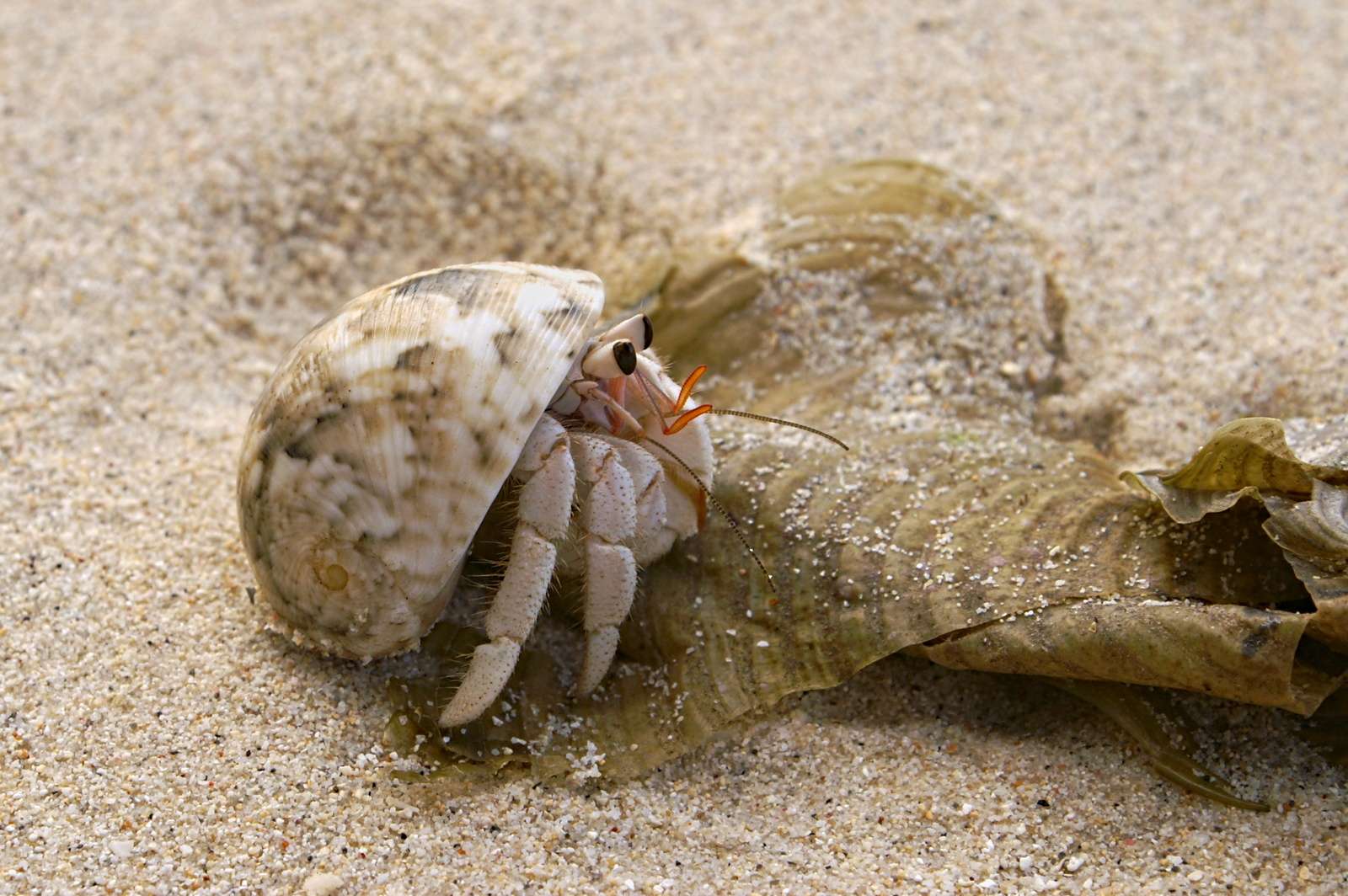
Conclusion
Exploring what hermit crabs look like without their shells unveils not only the vulnerable soft bodies beneath but also the intricacies of their fascinating existence. Hermit crabs are, in many ways, a testament to the wonders of nature’s adaptability. Their unique habit of appropriating discarded shells serves as a remarkable example of evolution’s creative solutions to survival challenges.
The exposed pleon, with its coiled shape and specialized gills, illustrates the elegance of nature’s designs. Hermit crabs have evolved to masterfully inhabit the intertidal zone and adapt to diverse coastal environments, utilizing the resources available to them. This adaptability is a testament to the tenacity of life in the face of ever-changing circumstances.
Understanding hermit crabs’ appearance without their shells sheds light on the intricate relationships they share with their borrowed homes. These shells aren’t just shelters; they are an essential part of a hermit crab’s identity, growth, and survival.
Hermit crabs without their shells offer a glimpse into the dynamic, resilient, and beautifully complex world of marine life. They remind us of the diverse strategies life employs to thrive in various environments and the importance of preserving these habitats for the continued survival of these extraordinary creatures. As we continue to explore the mysteries of the natural world, the humble hermit crab stands as a testament to the captivating secrets awaiting our discovery beneath the waves.

